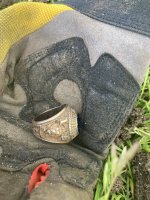SLNugget
Sr. Member
I assume the granted extra lateral rights of a lode claim are still applicable or am I mistaken? And if there is no apex of a vein on your claim but you discover the vein underground? Where does that leave you in regard to surrounding lode or placer claims? I hope this makes sense.
Amazon Forum Fav 👍
Upvote
0





